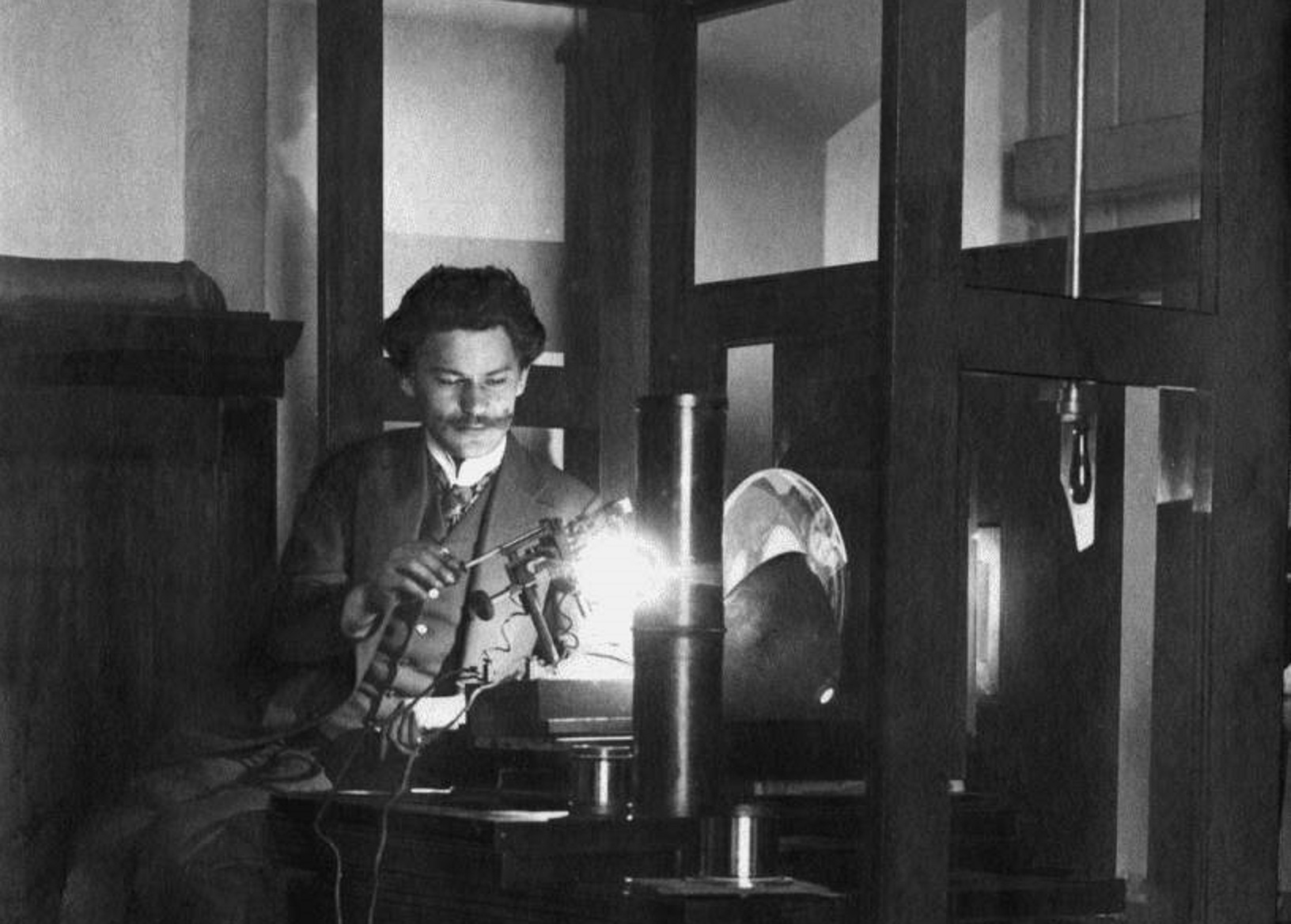Adam Leszczyński’s book has not been in any way distinguished so far – it was published only three months ago. One can be sure, however, that Ludowa historia Polski (A People’s History of Poland) is destined to be among the historical works most often reviewed and recommended – or criticized, in recent years. It certainly sparks curiosity. What is the reason for this? Is it a fresh new thesis? Perhaps a discovery of sensational, unknown sources and facts? The author’s strong position in the milieu of history writers? Or does the work simply display a talent for stirring the pot and arousing controversy?
by Wojciech Stanisławski
The answer is: all of this, with the exception of “new factual discoveries”, which is by no means an objection. The author had to work on the already published sources and studies due to the broadly defined time and thematic frames of the work. One could only claim that the choice he made was at times too selective. It is, however, impossible to expect an in-depth archival query from a researcher who intends to give a synthesis of social history over a thousand or more years and at the same time create a new interpretation. An interpretation not only different from the previous ones, but virtually turning the “vision of history” upside down. Yet this is the ambitious aim that Adam Leszczyński set himself when he was working on this book over the last few years.
A People’s History of Poland describes the situation of the “people” on Polish lands from the very beginning of the Polish state until 1989. It addresses the attitudes of the “elites” (nobility, gentry, clergy, intelligentsia, bourgeoisie, communist nomenclature) towards the “people”. It should be noted that the book is written in the form of an “historical essay” rather than as a presentation subjected to the rules of periodization and the rigors expected from an academic lecture on history. More precisely, Leszczyński gives a precise account of the justifications and “legitimations” created by these elites for various forms of exploitation.
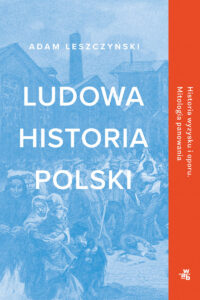
Author: Adam Leszczyński
Publisher: Wydawnictwo W.A.B., 2020
Leszczyński tends to neglect the differentiation of status within large social groups (the status of peasants in the 15th-century Grand Duchy of Lithuania was different than in the Kingdom of Poland; the situation of outworkers in manufacture at the beginning of the 19th century differed from the situation of large-industrial workers in the Second Polish Republic). He also ignores disadvantaged social groups who were less numerous, but who played an essential role in the color and complexity of social life in the former Polish-Lithuanian Commonwealth, and above all – the complexity of the relationship between the “people” and “elites”.
Among the forgotten or neglected are large strata: from the Karaims working at tanneries in the former Lithuania, to Kurpie region woodworkers, up to butlers at manors and servants in wealthy homes and the lumpenproletariat of big cities. One could say that his image of the society of Poland in the past is not a landscape rich in details. It is at times a two-color agitation poster, using a blur of red, typography, and an exclamation mark. And, at times, when Leszczyński worked more as an inquisitive researcher rather than a journalist and social reformer – it is a pencil sketch, meticulous or satirical, revealing valuable elements or grotesque features of a given character – but not offering the whole picture. The whole picture is hidden, as is often the case with a sketch comprising many zig zags and lines.
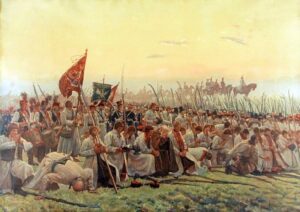
This is not an objection, considering that it would not be possible for Leszczyński to write the work that I set out in the above paragraph: the one that would be detailed, balanced and free from anachronistic evaluations. There were three obstacles that likely hindered his work: his temperament and the shape of the entire oeuvre so far, the thesis he adopted, and the research method he postulated (and implemented).
Let us leave the temperament for later, so as not to expose ourselves to the accusation of ad personam arguments, and the same goes for the achievements too. Let us begin with the assumption declared in the introduction, and at the same time the research postulate. Leszczyński decided to devote the People’s History of Poland to “three main issues: ( …) the history of the exploitation mechanism in Poland (…); the justifications of the rule and slavery (…) [and] the history of resistance to authority – resistance not directed against an ethnically foreign occupant, but against the social order.”
It is clear that the book is not so much about the history of social life and the evolution of strata and states, as might be assumed from its main title, but is rather about the techniques of exercising power (“mechanisms of exploitation”), techniques of opposing power (“history of resistance (…) against social order”) and “ideology” – ideas, persuasion and political concepts understood, in a bit of a Marxist way, as “superstructures” produced by classes with the intention of justifying exploitation.
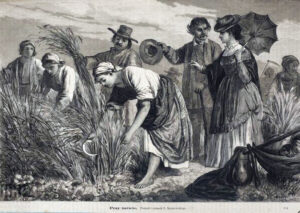
This last promise has been fulfilled, at least as far as the justifications constructed by the landlords employing serfdom or (less frequently) hired labor: several chapters compile the arguments and legitimations of inequality from the early modern times to the 19th century, including rare enthusiasts of the ideas of a separate ethnic origin of the gentry and peasants, either coming from biblical times (Cham, Shem and Japheth), or ancient eras (Sarmatians and Slavs). Even worse, with the history of technologies of resistance and power – it is impossible to talk about their systematization or analysis, although there were also picturesque examples of numerous peasant rebellions and their pacification.
It seems that these shortcomings (or perhaps more carefully, the inexhaustibility of the topic) can be explained by a different declaration, also included in the introduction, one which is not thematic this time, but ethical. Adam Leszczyński declares that he wants to write about the “weaker ones” (socially), on whose side he stands, in order to give them voice, thus opposing the “elite”.
That the author makes a deliberate ethical choice by declaring their solidarity with the “weakest”, is beyond any discussion. In the case of an active historian, however, such a choice also has textual and research consequences. Adam Leszczyński thus resigns from the perspective of not only “social solidarity” (he treats this very idea as another ideology legitimizing the possessing classes), but also any one focused on the society / nation as a whole, jointly subjected to external pressure or violence. Hence – very consistently – he basically omits in his book key experiences for the history of Poland as a state and Polish society, such as the great wars of modern times, the loss of independence and partitions at the end of the 18th century, or the regaining of independence in the 20th century and both world wars.
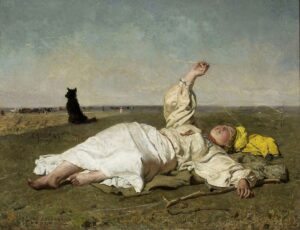
At the same time, he retains an ambition to write not a “catalog of resistance techniques” or, perhaps, a “history of class struggles”, but a history that presents the history of a community (a nation) in a panoramic way – an ambition visible both in the title and in the structure and chronological frames of the work. The explanation for this choice may be a powerful methodological addendum in which Leszczyński argues with the concept of “idiographic” or academic historiography – arguing that in the light of the achievements of postmodern historiographic theorists, it has lost its raison d’être.
In practice, however, Leszczyński seldom applies the famous four “clues” of Hayden White. More often he refers to a specific, very well-known historical work, similarly combining the time frame and title typical of the “academic” history of a given country focusing one or more social strata, like Howard Zinn’s A People’s History of the United States.
It is no discovery nor “unmasking”, since Leszczyński himself in the above-mentioned methodological afterword refers to Zinn as his model. I also do not intend (although it is a rewarding critical task) to make a full comparison of the two works. However, I would like to point out that their similarity is not limited to the (catchy) title, and the suspense of presenting a kind of “anti-history” under the guise of a typical “history of the state”. The common intention of both authors (and here we come back to the issue of temperament) seems to be contrariness or, to put it scientifically, subversiveness: a critical approach towards the existing historiographic pattern.

In both cases, one could argue that the revolutionary nature of such an act is similar. Academic historical narratives of both the United States and Poland are usually free from an excess of self-love, chauvinism, or lack of criticism – even if such attitudes are present in plebeian, colloquial, vernacular narratives. Apparently, however, the need for texts written in a critical and, at the same time, scholarly style, for “demythologising” books is even greater than the curiosity of works dealing with technologies of social resistance and exercising power. It is only after taking into account all these factors that it is possible to understand the popularity of the A People’s History of Poland – and its potential to trigger further polemics.
Author: Wojciech Stanisławski
Translation: Alicja Rose & Jessica Sirotin


